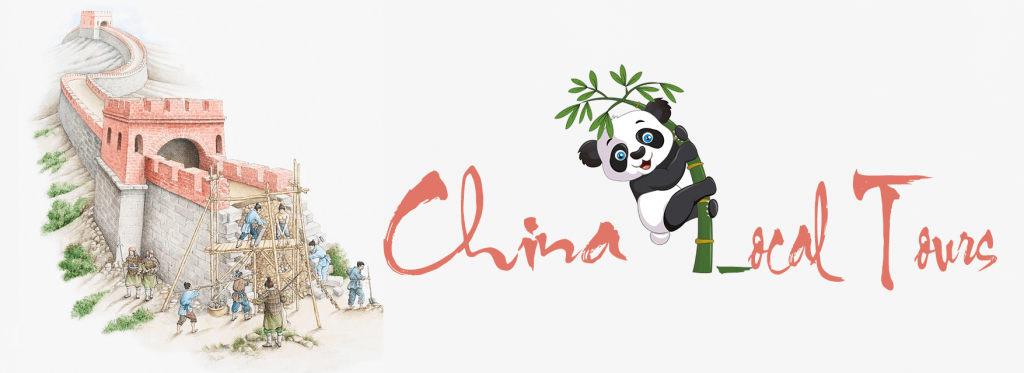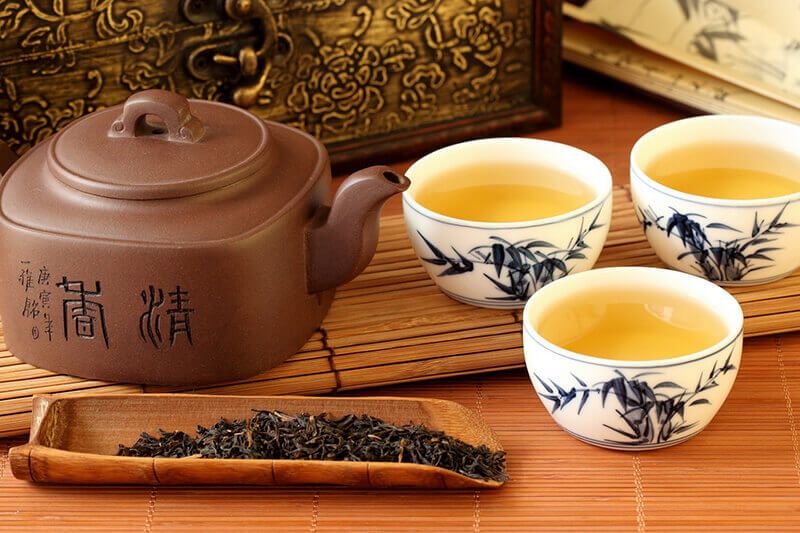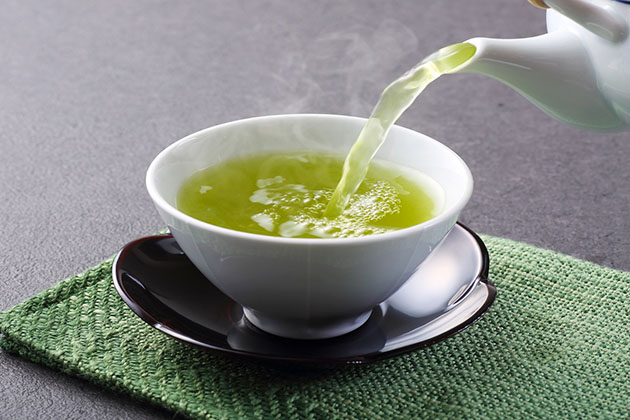Tea is the national drink in China. Besides its prominence in Chinese culture, tea also claims many health benefits, making it a popular drink worldwide. There are many different types of Chinese tea, which vary in the degree of fermentation and processing. The main classes of Chinese tea discussed below are green tea, yellow tea, white tea, oolong tea, black tea, dark tea, herbal tea, and flower tea.
Preparing yourself with the knowledge of Chinese tea categories would be essential if you are planning to start the China Tour. Below are brief insights into the processing methods used to create different types of tea.
Chinese Tea Categories
Green Tea
Chinese green tea is the oldest and most common type of tea which has been enjoyed in China for several thousand years. Green tea is made from the young buds of the tea plant, then the tea leaves are dried and processed according to the type of tea desired.
The techniques for processing green tea are sub-divided into three categories: water removing, rolling, and drying. Like white tea, green tea also undergoes minimal oxidation process, which keeps more antioxidant properties. So, green tea also helps to strengthen your health, which according to recent research can help reduce the risk of stomach disorders, osteoporosis, improves our brain function and slow down the aging process.
Green Tea is mainly produced in the provinces of Jiangxi, Anhui, and Zhejiang. The most famous type of green tea is West Lake Dragon Well Tea (Long Jing), which is produced in Hangzhou.
Yellow Tea
Yellow tea is properly the rarest and most expensive varieties of tea, accounting for maybe less than half a percent of the total tea production in China. Yellow tea is also used to describe the high-quality tea that was served to the emperors, as yellow as the traditional imperial color.
The making process of yellow tea is similar to green tea except for the key point that during the drying process, the yellow tea leaves are encased and steamed. This drying process is slower than the method used for producing green tea. The result is tea leaves turn a light yellow color and offer a mellower flavor than that of green tea. This slow drying process also eliminates the grassy taste and smell associated with standard green teas.
At first, people naturally considered the tea to be bad green tea, but gradually people came to enjoy the different flavor and it eventually became one of the six major types of tea. Develop the habit of drinking yellow tea regularly is good for your spleen and stomach as well as reduces the risk to get ingestion, loss of appetite and obesity. Junshan Yinzhen from Hunan province is the country’s most popular yellow tea.
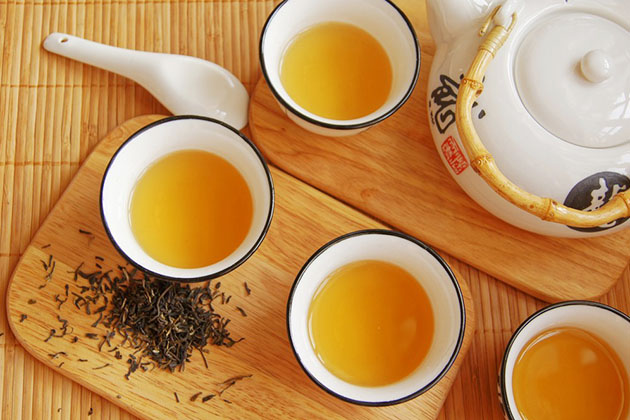
White Tea
White tea, indigenous to Fujian Province, is one of China’s special treasures. Its color is lighter than other types of tea with a subtle and delicate flavor. The white tea leaves are picked when they are still young and immature with white hairs on the unopened buds. That’s why white tea has a whitish appearance. And white tea takes short processing time, which keeps a high number of antioxidants that are beneficial to people’s health. According to Linus Pauling Institute, this tea is full of anti-oxidants which is 50 times greater than those found in Green Tea. Therefore, drinking white tea can help to repair damaged cells as well as the refreshing mind, cooling body, and remising fever.
The most prized varieties of white tea are White Peony and Silver Needle. White Peony which is made from the first and second tips of a tea stem is the best quality. Its name comes from the way the brewed leaves seem to bloom like the buds of the first flowers in springtime.
Silver Needle is considered the most expensive of the White Tea. It is made only from the single tips of the tea stem which look like silver needles as dried. The tea has a light yellow color and refreshing taste and odorous.
Oolong Tea
Oolong tea, also known as blue tea, is a Chinese traditional tea with unique characteristics. Among these 6 different types of Chinese tea, oolong tea is semi-fermented which means the leaf has been oxidized anywhere between 50% up to about 88.5%. The processing of oolong tea combines the making methods of green tea and black tea. Therefore, oolong tea possesses the fresh fragrance of green tea and the mellow taste of black tea. Even after 7 times steeping, you can still smell its fragrant flavor.
In recent years, it has become popular with more and more people for healthcare function and its effects in helping to reduce high blood pressure lower cholesterol, prevent coronary heart disease and aid digestion.
Famous Chinese oolong teas include Taiwan Paochong Oolong Tea, Anxi Oolong Tea, and Wuyi Rock Tea. Da Hong Pao (Big Red Robe) of Wuyi Rock Tea variety and Tieguanyin (Iron Goddess of Mercy) of Anxi Oolong Tea are two of the top 10 Chinese teas, and very good gifts to buy in China.
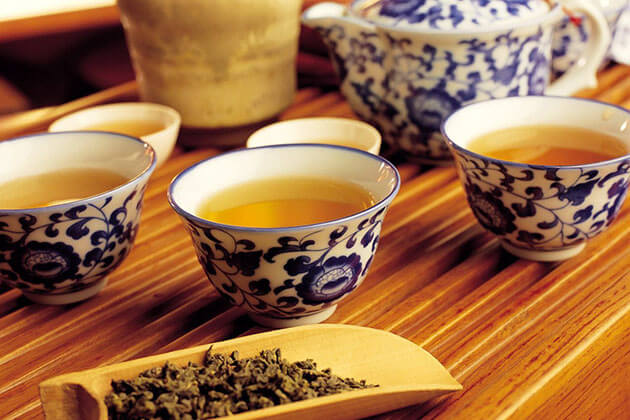
Black Tea
Black tea, called red tea in Chinese, is the second-largest category of Chinese tea, behind the green tea. Different from green tea, black tea is fully fermented. The tea sprouts and youngest leaves will wither, and then be rolled, fermented and dried. During these processes, it produces many beneficial compounds, like flavonoids and polyphenols and so on. Therefore, it not only has a stronger flavor but also has many health benefits.
Research indicates that drinking black tea helps to digest, warm the stomach, refresh and eliminate fatigue. Black tea also has a limited effect in slowing down aging and anti-cancer. However, black tea is not suitable for women during the menstrual period, the pregnancy, or menopause, and patients with neurasthenia or gallstone.
One of the most popular types of black tea is Keemun (qimen) from Anhui province and Lapsang Souchong (zhengshan xiaozhong), which is smoked over burning pine, giving it its unique flavor.
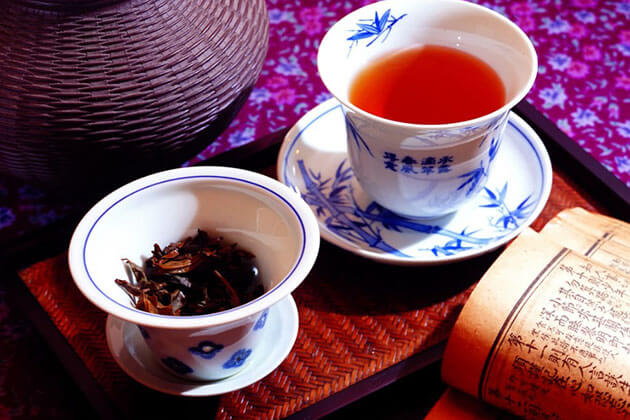
Dark Tea
Post-fermented tea or dark tea (literally as Hei Cha) is one of the six tea categories in China with a history of over four hundred years, which only exists in China and is an indispensable beverage for the Chinese ethnic minorities in their everyday life.
Tea farmers pick the relatively old tea leaves and let it go through a post-fermentation process where heat and moisture are added to encourage the microbial activities in the leaves. The whole process includes six steps: water removing, first-time rolling, heaping, second rolling, baking, and drying. The tea leaves and its liquor made from them become darker with oxidation. Thus, the various kinds of fermented teas produced across China are also referred to as dark tea, different from what westerners call back tea (which Chinese know as red tea).
Because it is fully oxidized, dark tea has a lower antioxidant content than white or green tea, but it is credited with many health benefits such as promotion of weight loss, reduction of serum cholesterol, and cardiovascular protection. The most common dark tea brands include the Fu Tea from Hunan Province, Pu’er Tea from Yunnan Province, Tibet Tea from Ya’an, Sichuan Province, Liupu Tea from Guangxi and the Old Dark Tea from Hubei. Dark tea is very common in Hong Kong, Macao, Southeast Asia, and Japan.
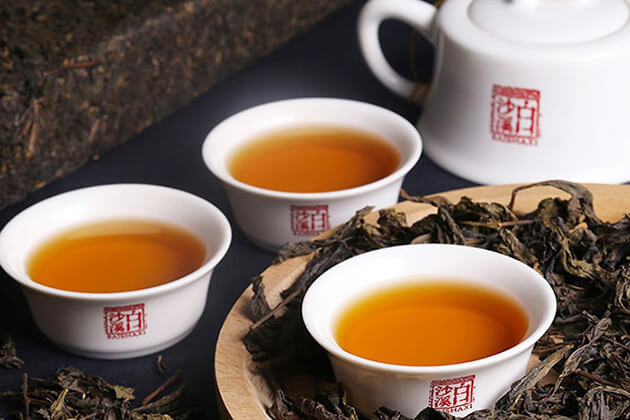
Herbal Tea
Chinese herbal tea, also known as medicine tea, is made from herbs that have healthcare functions and curing effect on some physical ailments. This type of tea is not made from Camellia Senensis (tea plants), they are based on different plants such as rooibos, honeybush, mint and chamomile with natural flavorings extracted from freshly ground spices and fruits. Different herbal tea has different effects. Herbs can be used either singly or combined with other herbs, depending on what kind of outcome is needed.
According to Chinese medicine, all herbals are separated into two categories: cooling and warming. Some herbals have stronger cooling properties which help cut down on fire in the body and move out inflammation. Warming properties help you cultivate more energy inside to help the blood circulation. Herbal tea is very popular as its health benefits with gentle and mild flavors.
Some popular herbal tea includes Rooibos, Lemongrass, Mint, and Chamomile. Rooibos is a caffeine-free red tea from South Africa. This tea is widely used in creating other flavorings and flavored herbal blends.
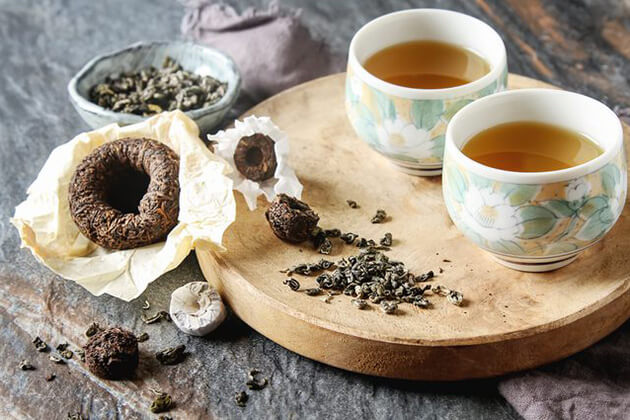 Flower Tea
Flower Tea
Flowering teas, also known as blooming teas, is an assortment of health-caring drink which is made through picking, drying, processing of bud, or petal of flower plants. The most common flowers used in the production of Chinese flower teas are hibiscus, lily, jasmine, osmanthus, chrysanthemum and globe amaranth.
One of the unique features of this tea is that when the tea is steeping, you can watch the blooming effect as the tea start to unfold like a flower in springtime. The leaves bloom first with the flower as the main centerpiece.
The health benefits of flower tea are numerous. Flower tea is rich in antioxidant properties so it can prevent stress, lose weight, boost vitality and even help decrease the risk of developing cancer. While these types of teas aren’t overly popular with the west or some regions of China, they’re relatively common in the Yunnan region of China.
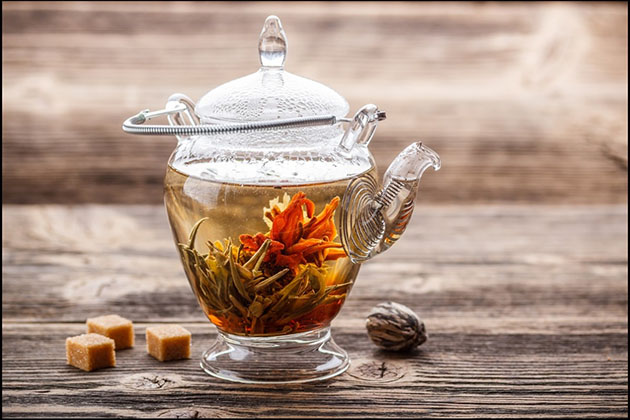
How to Buy Tea in China
As we have seen above, there are hundreds of different varieties of Chinese tea and each diverse in quality. This can make buying tea as easy as buying a fine wine at home, but the most important thing is to enjoy and have fun!
You can pick up tea at any street markets or supermarkets but for the best experience head to a specialist tea shop or market. Here you’ll be able to taste the tea and compare different varieties before you buy it. Shop assistants at tea shops in more touristy areas can speak English very well, so you do not need to worry if you want to ask for more detail about tea.
The most common and easiest place to buy tea is the China-wide chain, Wu Yu Tai. In Beijing, you can visit the huge Maliandao Tea Market while in Shanghai, you are highly recommended to visit the biggest tea market named the multi-story Tianshan Tea Market.
